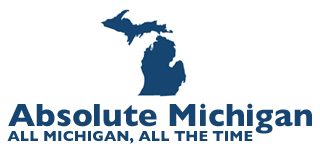Our Stylish Wines Boldly Express Provenance: Michigan’s American Viticultural Areas
 Lorri Hathaway and Sharon Kegerreis are writers who are passionate for Michigan and the authors of the award-winning From the Vine: Exploring Michigan Wineries. Learn all about Lorri & Sharon and their work at www.michiganvine.com.
Lorri Hathaway and Sharon Kegerreis are writers who are passionate for Michigan and the authors of the award-winning From the Vine: Exploring Michigan Wineries. Learn all about Lorri & Sharon and their work at www.michiganvine.com.
Michigan’s agriculture has a rich and bountiful history. What’s grown in our soils reflects the passion of farmers and winemakers to preserve our farmland for growing fruits and vegetables, and making world class wines from the European vinifera and hybrid grapes that grow here. Our wines uniquely reflect our growing conditions and the skills of our winemakers. Essentially, provenance is directly reflected in our wines.
In honor of Michigan Wine Month, let’s explore provenance or, rather, Michigan’s American Viticultural Areas, simply referred to as AVAs. Who cares? Well, the growing conditions heavily influence the quality and flavor of wine poured into your glass.
Very often, AVAs are confused with appellations, or the two terms are used loosely when referring to one or the other. First, let’s learn the difference. An AVA is a designated wine grape-growing region that is federally-approved. In order for a vintner to list an AVA on their wine label, at least 85% of the grapes used to produce the wine must be grown within the geographical area.
An appellation, on the other hand, is a protected name under which a wine may be labeled. It’s a geographical indication of where the grapes are grown. The rules that govern appellations are dependent on the country in which the wine is produced. These specifications can include, but are not limited to what varieties grapes may be grown, maximum grape yields, alcohol level and other quality factors.
The state of Michigan as a whole, for example, is an appellation. Within Michigan, there are four established AVAs, all of which are located near the west coast of the Lower Peninsula along the shores of Lake Michigan.

Chateau Grand Traverse Vineyard by Snazzy
Fennville AVA
Located in southwest Michigan, Fennville is the first AVA in Michigan, and the third in the United States following Augusta (Missouri) and Napa Valley. Fenn Valley Vineyards is the only commercial winery located within the AVA. The Fennville AVA consists of 75,000 acres and is completely located within the boundaries of the Lake Michigan Shore AVA. It is mostly located in the southwest portion of Allegan County with a small section extending into the northwest corner of Van Buren County. (in-depth on the Fennville AVA with Lorri & Sharon)
Lake Michigan Shore AVA
The Lake Michigan Shore consists of 1,280,000 acres in southwest Michigan and is by far the state’s largest AVA. In fact, its size is larger than the other three areas combined. It is located in the southwest corner of the state 72 miles along the Lake Michigan shoreline from the Kalamazoo River down to the state line at Indiana. The width of the defined area is 25 miles east from Lake Michigan at the northern border and 35 miles east at the southern border. (learn about the Lake Michigan Shore AVA)
Leelanau Peninsula AVA
The Leelanau Peninsula AVA is located in northwest Michigan and is the same size as the Fennville AVA at 75,000 acres. It includes all of Leelanau County except for the offshore islands of North and South Manitou Islands. (explore the Leelanau AVA)
Old Mission Peninsula AVA
Old Mission Peninsula is Michigan’s smallest AVA, consisting of only 19,200 acres. The defined area is all of Peninsula Township, excluding the offshore islands of Marion and Bassett Islands, and a small portion of Traverse City Township. (more on the Old Mission AVA)
Michigan’s AVAs are full of agricultural bounty with plenty of elbow room. As a comparison, the Napa Valley AVA is 43,000 acres with more than 300 wineries. This is a little more than double the size of Old Mission Peninsula with seven wineries and just over half the size of both Fennville and Leelanau Peninsula with one winery and 18 wineries, respectively. Lake Michigan Shore is three times as big as Napa Valley with only 15 wineries. In addition to the wines being produced within the AVAs, inland wineries scattered across the state are producing high-quality wines grown within mesoclimates.
So, whenever you’re sipping a delicious glass of Michigan wine, take a look at the label for the region in which the grapes are grown. Next, think about how wine represents the people who craft it, the vineyard that grows it, the tasting room where it’s served and the region it promotes. You may just find you have a favorite Michigan region.

